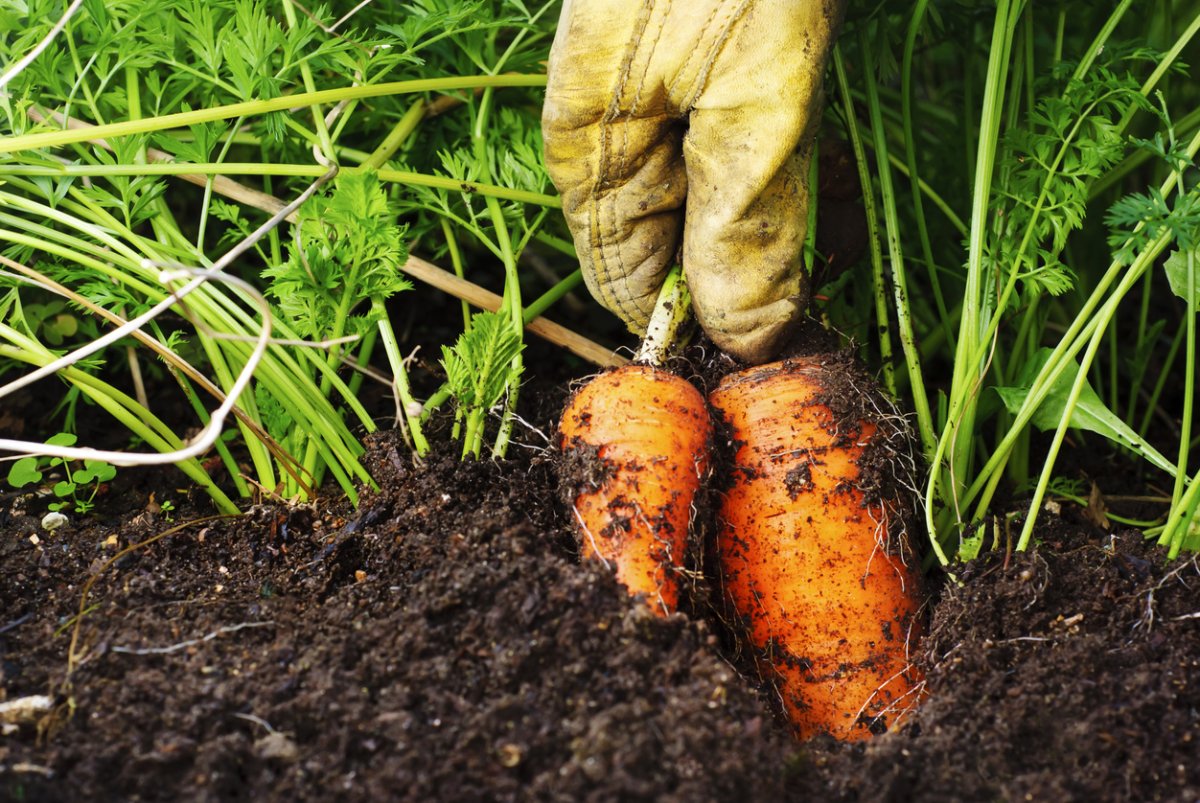If you want a healthy garden, you have to start with healthy garden soil. That’s why you’re here, right? I’ll be the first to admit that I love to see those gardens full of bushy basil, scores of deep purple eggplants, plant after plant of yellow and orange tomatoes ripening on the vine, and on and on.
My garden is coming along nicely and improving year after year. But it took a few seasons to get there. One of the reasons things moved so slowly is because I neglected one of the most critical factors in a happy garden: the soil.
Like many new gardeners, when I started out, I didn’t do much more than put my seeds or seedlings in the ground, pull weeds, and keep the garden watered. And honestly, there’s nothing wrong with that. I still had an okay harvest of most of the vegetables I planted, though some were complete failures.
The following season, I added some compost to the garden, and the results were stunning. It was evident that healthy garden soil was a major factor missing from my overall gardening strategy. So like any good garden gnome, I read, experimented, plotted, and planned. Here’s what I learned.
Discover 7 top tips for growing, harvesting, and enjoying tomatoes from your home garden—when you access the FREE guide The Best Way to Grow Tomatoes, right now!
Your 7 step plan to healthy garden soil and happy vegetables
1. Test your soil. I resisted this for some time, but the absolute, number one must-do if you want healthy garden soil is to test your soil. Well beyond any toxic elements like lead or arsenic, soil testing can give you loads of information, such as the levels of nitrogen and other important plant nutrients. In addition, testing can determine the pH levels of your soil, as well as the percent of organic matter, phosphorous, and other important plant nutrients. It’s also not as expensive or complicated as you might think. For example, the University of Minnesota Soil Testing Laboratory charges less than $35 for a regular soil test and lead test. The University of Massachusetts Soil & Plant Nutrient Testing Laboratory charges $20 for a routine analysis, and the University of Rhode Island Cooperative Extension offers free pH testing for residents of the state and “surrounding areas.”
2. Amend your soil. Naturally, the next step after soil testing is to amend your soil based on the results. For acidic soil, you can add garden lime, wood ash, or bone meal to raise the pH. If your soil is too alkaline and you need to increase the acidity/lower the pH, you can add things like pine needle mulch, used coffee grounds, or compost tea. However, it’s essential to take it slow. The soil and your plants need some time to adjust and incorporate things. Additionally, a little can go a long way. You don’t want to overdo it and end up at the opposite end of the pH spectrum from where you began.
3. Add compost. I can’t preach the gospel of compost enough. It’s made such a tremendous difference in my garden, as well as the gardens of pretty much everyone I know. Compost adds nutrients your vegetables need, and it’s full of important microbes that help maintain healthy garden soil. There’s never a bad time to add compost, either. It works well as mulch, or you can work it into the soil in late fall when you’re cleaning up your garden for the season, or in the spring when you’re getting ready to plant. Plus, compost offers the additional benefit of reducing the amount of waste that goes to landfills.
4. Use cover crops in the winter. Cover crops help prevent soil erosion, and the Oklahoma State University Extension Program points out that the roots help draw up and retain many of the nutrients that may otherwise be too deep for shallower-rooted plants to reach once you plant in the spring.
5. Use care with any pesticides or herbicides. There are plenty of good reasons to stick with organic pest control methods in your garden. However, one of the biggest is that many chemical pesticides can also kill off many of the beneficial insects and soil microbes. As gardeners, we need earthworms, bees, and ladybugs, among others. In fact, earthworm poop (also known as earthworm castings) are some of the most beneficial elements in healthy garden soil. Bees and butterflies help pollinate your veggies. Ladybugs eat aphids and other harmful pests.
6. Rotate your crops. Rotation isn’t just for big commercial farms. Even in small gardens, rotating crops can help reduce plant diseases, reduce harmful pests, and help maintain the nutrients in the soil.
7. Plant in raised beds or containers. This isn’t so much about creating healthy garden soil as it is about starting fresh. Sometimes, no matter what we do, nature has other plans. Your soil may be too rocky, too depleted, or have too many toxic chemicals to safely and successfully grow a vegetable garden. Raised beds and containers give you the chance to start from scratch with rich, healthy soil. That said, most of these tips still apply. Especially with raised beds or in large containers, you probably aren’t planning on emptying them and buying more soil each season. So while you may not need to worry as much about cover crops or testing, things like mulch, compost, crop rotation, and staying away from harmful pesticides will help in almost any gardening situation.
How do you keep your garden soil healthy and happy?
Discover 7 top tips for growing, harvesting, and enjoying tomatoes from your home garden—when you access the FREE guide The Best Way to Grow Tomatoes, right now!

One reply on “How to Create Healthy Garden Soil in 7 Steps”
Looking for free vegetable seeds for a community garden